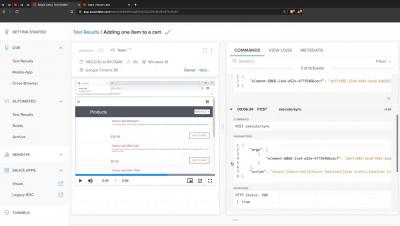Systems | Development | Analytics | API | Testing
Testing
The latest News and Information on Software Testing and related technologies.
Sauce Labs - Mobile Test Automation With Cucumber
Python Load Testing Best Practices
Python is one of the leading programming languages in the world. Many of the world’s most popular websites run, at least in part, on Python, including Instagram, Google, Instacart, Uber, Netflix, and Spotify. When the language is used properly, it can be very efficient and requires low processing power in most cases. It’s important for sites to rely on python load testing best practices and security testing services by companies like QAwerk to understand how efficiently their site runs.
Mobile browser testing - what is it and when is it done?
About two decades ago, testing was only limited to the desktop. With the rapidly increasing use of smartphones and ease of access to the internet across the globe, testing has spread across vast platforms. The native and mobile web browser testing is being performed more and more compared to desktop testing.
How do you decide your approach for mobile website testing?
The meteoric emergence of smartphones is nothing short of phenomenal, as a growing number of consumers are leveraging the potential offered by the smartphone ecosystem. As per April 2019 data of Statistica[1], the global mobile population accounted for 4 billion unique users. That’s not all, the global mobile traffic is expected to increase sevenfold between 2017 and 2022. The daily media consumption on mobile devices has grown by 504 percent since 2011[2].
Comparing k6 and JMeter for load testing
When I joined the k6 team in late November, the foremost question on my mind was "How does this compare to JMeter?" You see, I come from a performance testing consulting background, and in the last few years, JMeter has been far and away my tool of choice. So what am I doing on the k6 site, talking about how much I love JMeter? Well, firstly, it turns out that the k6 team is pretty open and transparent, especially about potential improvements in k6.
Wales Emerging Tech Fest - Aled Miles Keynote
Rainforest QA Product Overview
Consolidate performance testing in Jira with Xray and NeoLoad
Performance testing has become increasingly distributed, as teams do more testing at each stage of the software development life cycle. While the business benefits of performance testing are undeniable, like finding defects earlier when it’s easier and less expensive to fix them — it makes managing all your tests more challenging.
5 virtual experience trends in retail and commerce in 2021
Virtual experiences have been booming in retail and e-commerce. And it’s no wonder. VR and AR offer a ton of benefits to companies that sell products online, or use online channels to divert traffic to stores or sales professionals. These experiences can increase conversions, boost word-of-mouth traffic, and lower return rates. Want to see some examples?











